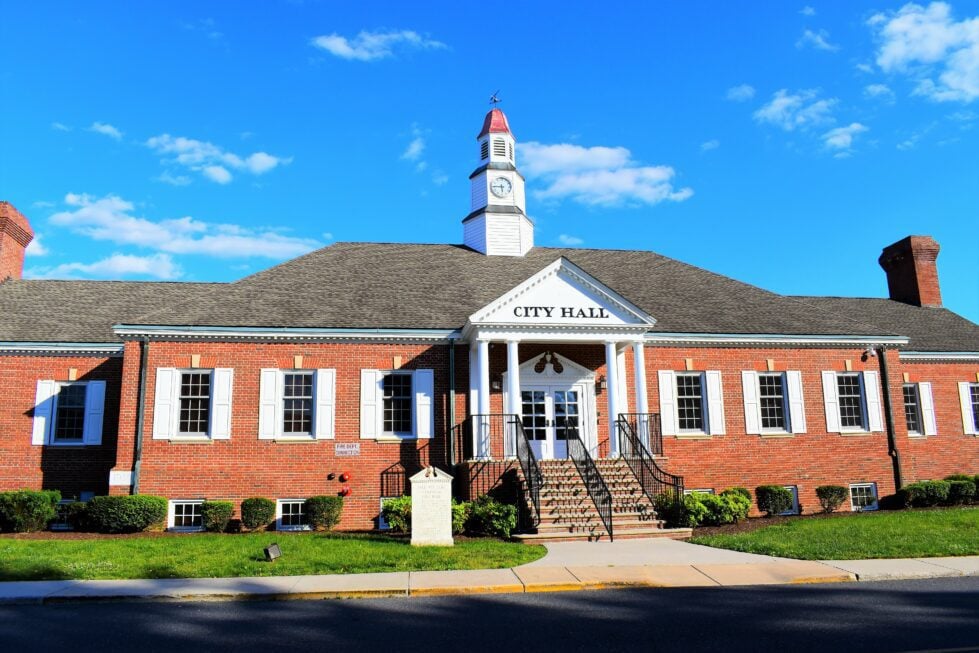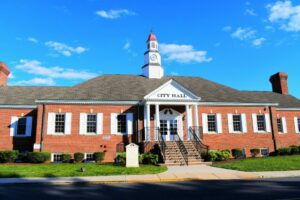At a recent workshop, Milford City Council learned from each department their suggestions for Capital Improvement Plans for the city. The plan, which covers years 2025 to 2029 totaled $94,339,510. Items included everything from replacing chairs for the conference room to land purchases for parks.
“One of the things I found really disturbing right away was it has no IT projects listed,” Councilman Andy Fulton said. “We know that is a very expensive and ever evolving system of updates and they’re not cheap. They’re costly, but they’re not in the CIP at all.”
City Manager Mark Whitfield explained that most of the IT for the city had been moved to the cloud which then meant there was not a need for CIP fund to be set aside. Those costs would now appear in the general operating budget. Councilwoman Nirmala Samaroo asked about the increase in the sidewalk connectivity projects.
“I think in the first year or two that was working in conjunction with the planning department. For the first year or two we had put a lower dollar amount just to kind of get our feet wet and as the years go along the areas that sidewalk infill needs to occur and tend to fall into areas without curbs or areas that need heavier grading,” James Puddicombe, City Engineer, said. “So, for that reason, the cost of doing those infill sections tends to go up a little bit. We also found that we were falling a little bit short on being able to do essentially whole blocks with $150,000. So, by having it around $350,000 It allows us to do essentially a whole block of sidewalk into at a time to just complete an entire area.”
Councilman Brian Baer questioned whether the city could obtain grants for some of the bicycle paths and TAP projects.
“Actually, I can answer that. Yes, first of all, the TAP projects are already a federally funded program through DelDOT. What is listed as part of the project is actually our portion of that project. So, there’s a match that we have to make same with the bridge projects that are listed there in 90% is federal and 10% is city that goes in for the bridge replacement projects,” Whitfield said. “We have a lot of opportunities on bike paths for various grants that come available through DelDOT and the federal government. This is also an approved DelDOT plan who are looking at grant opportunities that may come around, particularly those that are along or within state rights of way. So, they have that on their radar. The other opportunities that we have are municipal street aid that we can use for various street projects, and we also have community transportation funds that we receive through our state legislators, both the Representatives and the Senate. They have money that we can request through them to get that get those funds for those types of projects. So and again, I think we’ve been pretty successful at obtaining those grants and we’re always looking for those grant opportunities to be able to run a lot of these projects.”
Rob Pierce, City Planner, explained that Dover Kent County Metropolitan Planning Organization also helps prioritize transportation projects, including bicycle and pedestrian projects through DelDOT. We’ve been doing a lot of these studies recently through their organization to help funnel some of these projects into state funding. DelDOT has given the city a commitment to do the shared use path from Parson Thorne Apartments, out by the fire house and on up to the high school and 113. That project was in the design stages currently.
“I would just say this about sidewalks. And you know, I love the idea of connectivity. I like sidewalks that goes somewhere, not just going in abruptly at a dead end or something like that,” Councilman Andy Fulton said. “I will remain of the opinion that sidewalk repairs should not be placed upon the citizens. It should be the city’s responsibility for those repairs. I don’t think it should be on the citizens. And that’s something that I think needs to be looked at in the future.”
Councilwoman Katrina Wilson agreed, stating that many property owners were struggling to pay their taxes already and adding sidewalk repairs was not helpful.
“I hate being historian but sometimes we require that. Councilman Culotta and I have worked on this very aggressively and took a very strong position and in fact when we had the committee’s this was our particular topic, and we understand this so this is just a little refresh. We understand information was provided to us and our first general counsel really, really fought this and that the city manager provided me with a history and the reasons why that is paid for by the citizens and some of it was due to liability,” Councilman Jason James said. “I still think this council can take this action, we can start to take the action and do the research into the homework and say what would it cost and what would it take? How do we remove the city for liability from everything that could happen on the sidewalk that’s adjacent or in front of someone’s property and make a proposal to the council as a whole and come up with an idea. We can we have the power to make that happen through our collective efforts. We can’t just say I don’t think it’s a good idea to sit and wait for the city administration to have this council present a proposal because I think it could work and unless you have that and I’m still willing to be part of that because I believe the same as you all do, but it has to be done the right way. And it has to be done to mitigate or remove the city from any liability.”
Councilman Todd Culotta thanked Councilman James for bringing up the liability issue with sidewalks.
“I think for a long time the sidewalks were ignored in the city. We talked about a walkable city and connected city but the upkeep on sidewalks was really ignored and then all of a sudden, we came up with the sidewalk repair program,” Councilman Culotta said. “And we said well charter says the homeowner is responsible for it. So, let’s charge them or make them do it. And one of three different ways. A fourth way which wasn’t initially announced was also providing funds for people that can’t afford it.”
Councilman Culotta continued.
“But I think the initial part of it can be expensive because the longer you wait, the more it costs, but I also think that was also ineffective in how we did it because people said that okay, fix where we say because the city determine where the fixes needed to be. The homeowner has to comply with that. So, the homeowner says “Well, I’m only going to fix where you tell me to fix it”. So we take this section out, fix it that section, take that section and fix it,” Councilman Culotta said. “If you talk to anybody that’s doing the work if you took this whole sidewalk all it at once and fix it, it will be cheaper. And I think to that extent, it was somewhat ineffective. And then we came back and made fixes to it and people got bills that were three times what they were expecting. And we corrected that. I mean, we went through that process, but I think we avoid all that when the city takes care of it, because then we determine where the fixes need to be and the priority for repairs. We can easily do that and still would have liability in terms of making sure the sidewalk is fixed. Our liability does not require us to shovel snow, that is the homeowner’s requirement. You know it is a right of way. So, I do think there’s kind of echo what Councilman James said there is room for us to design a better path.”
Councilman Fulton pointed out that if someone fell on the street, the city could be held liable, so he did not find that argument valid. Whitfield pointed out that council had tasked him with researching whether the city could afford to repair sidewalks in all areas, and it was determined that it was cost prohibitive. He cautioned council to consider those costs before they made changes to code.
Many of the projects listed under streets included bicycle and pedestrian paths, including on Marshall Street, route 113, Airport Road, near Milford High School, Wickersham, Southern Delaware Golf Course and Watergate. There are also costs over the next five years for several TAP projects and streetscapes on Denney Row and Park Avenue. Southwest Front Street, Columbia Street and Franklin Street are also scheduled to get streetscaping. Over the next five years, the city could spend $30,934,811 on street projects with plans to seek grant funding for many of them.
Electric projects for the city over the next five years are expected to total $4,668,678 while water projects are expected to cost $18,222,130 and sewer projects total $7,424,301. Solid waste projects could cost $515,500.
“As for Public Works Department, Customer Service needs HVAC system replacement and upgrades to the drive through,” Whitfield said. “We also have curbs that need replacing as they are deteriorating. We are also purchasing 20 chairs for the conference room as they have lived their life.”
Parks and Recreation’s request for the CIP included an F350 dump body and a brush cutter. In addition, Brad Dennehy, Director of Parks & Recreation, explained that the basketball courts needed rehabilitation for $40,000.
“We are looking at the Marshall Pond riverbank development. This is the area along Marshall Pond, and it backs up to the Pop Warner field,” Dennehy said. “Our aim is to create a recreation area here. This is property that we currently own. There’s an old amphitheater down there and this is a way to create some sort of cohesive park system down there to give more passive and active recreation, whether it’s a beach volleyball court, picnic pavilion, some sort of possibly a dock for kids to fish off of.”
The total projects for Parks and Recreation were $9,188,851 with approximately $2,820,000 proposed for open space acquisition. The city is also looking at creating a park area in front of City Hall. There was also funding included to redesign the parking lot behind city hall along with other parking lots owned by the city. The CIP will be discussed, and projects approved during the budget hearings planned for late May.
Share this Post




